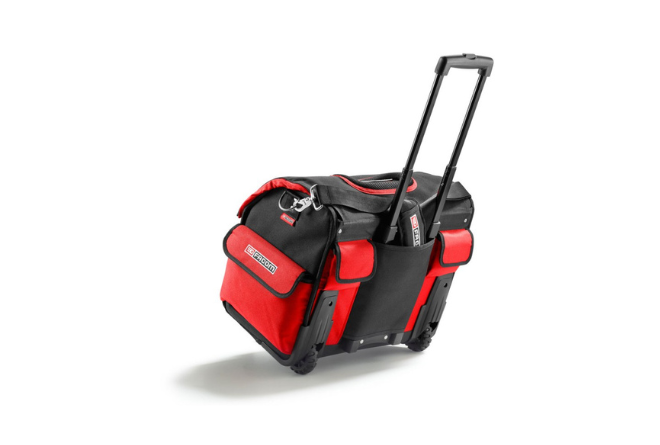The Ultimate Guide to Selecting the Perfect Wheeled Tool Bag
In the world of tools, organization and portability are two qualities that significantly increase efficiency. Whether you’re a DIY enthusiast, a homeowner with a knack for repairs, or a professional tradesperson, a wheeled tool bag can be a game-changer. Just like the tools they house, these bags come in various shapes, sizes, and specifications. The ideal one for you depends on the volume and weight of tools you carry, the type of tasks you undertake, and where you use them. Dive in with us as we guide you through the process of selecting the perfect wheeled tool bag.
Understand Your Needs
Tool Inventory: Before investing in a tool bag, take inventory of the tools you’ll be storing. This will give you a clear idea of the size and compartments you need.
Frequency of Use: If you use your tools frequently and shift locations often, prioritize durability and wheel quality.
Type of Terrain: For those often moving across uneven terrains, larger, heavy-duty wheels would be beneficial. For smoother surfaces, a standard wheel will suffice.
Material Matters
Durable Fabric: Most high-quality tool bags are made of polyester or ballistic-weave fabric. These materials resist tearing and can handle the weight of heavy tools.
Weather Resistance: For outdoor jobs or unpredictable environments, water-resistant or waterproof materials will protect your tools from moisture damage.
Compartmentalization is Key
Open vs. Closed Pockets: Open pockets are great for tools you use often, while zipped or Velcro pockets are ideal for smaller tools or parts that might get lost.
Modular Compartments: Some bags come with removable dividers or pouches, allowing you to customize the bag’s interior based on your tool set.
Specialized Compartments: Look for bags that offer specific pockets or holders for tools like hammers, tape measures, or power drills.
Wheel and Handle Quality
Wheel Size and Type: Larger wheels tend to handle rough terrains better. Rubber wheels offer better traction while plastic ones are lighter and often cheaper.
Telescopic Handle: A telescopic handle should extend and retract smoothly. Ensure it locks securely in place when extended.
Handle Grip: An ergonomic handle grip can reduce hand fatigue during transport, especially when your bag is loaded with heavy tools.
Additional Features to Consider
Zippers: Metal zippers are typically more durable than plastic ones. Opt for those with larger teeth as they’re less prone to jamming.
Stabilizing Feet: These prevent the bag from tipping over when set down.
Security: If you’re concerned about tool theft, consider a bag with lockable zippers.
Visibility: Some bags offer reflective stripes, which is especially useful for those working in low-light conditions.
Reviews and Recommendations
Even if a bag checks all your boxes on paper, it might not perform as expected in real-world conditions. Always check user reviews, and if possible, get recommendations from peers or colleagues.
Set a Budget, but Don’t Skimp
A high-quality wheeled tool bag is an investment. While it’s important to set a budget, remember that quality often comes at a price. A durable bag will save you money in the long run by protecting your tools and serving you for years.
Conclusion
Your tools are an extension of your skills, and they deserve a safe, organized, and easily accessible home. While the sheer variety of wheeled tool bags might seem overwhelming, breaking down the selection process into key considerations makes it manageable. Remember, the perfect bag for you balances size, material quality, compartmentalization, wheel and handle quality, added features, user reviews, and your budget. Happy hunting, and here’s to more efficient and organized workdays ahead!




